Can you find the wagtail in the garden? And is the wagtail colored yellow? What do the nest and young birds look like? You can find out this and more in our article on the white wagtail.
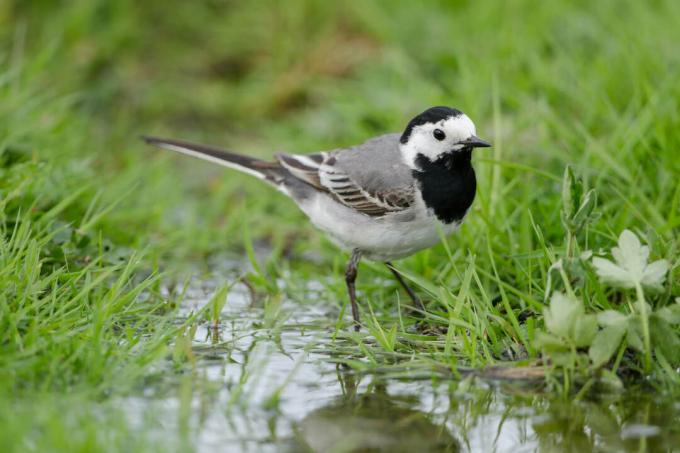
The wagtail (Motacilla alba) belongs to the family of stilts and pipiters (Motacillidae) and is slightly larger than a tit or a sparrow. Recognizable by their typical stilting gait and contrasting plumage, the wagtail likes to strut through open, moist meadow areas in search of food or singing from high waiting areas to their territory to mark. The bird can also be observed in parks and gardens with large lawns. Everything else you need to know about wagtails and how you can support the birds in your own garden can be found here with us.
contents
- White wagtail: profile
-
This is how you recognize the wagtail
- What is the difference between female and male wagtails?
- What does wagtail singing sound like?
- How do you recognize a young wagtail?
- What do wagtail eggs look like?
- Which habitat do the wagtails prefer?
- Where does the wagtail build their nest?
- When is the wagtail breeding season?
- Where does the wagtail spend the winter?
-
Support the white wagtail in the garden: This is how it works
- What do wagtails eat?
- Which nest boxes are suitable for wagtails?
- How can you additionally support the wagtail?
White wagtail: profile
| size | About 18 cm |
| weight | Approx. 25 g |
| Breeding season | April June |
| lifespan | Up to 10 years |
| habitat | Open areas, preferably near water |
| Feed preference | Insects and spiders |
| Threats | Decrease in food and habitat, human hunting while on the move, death from car traffic |
This is how you recognize the wagtail
White wagtails are characterized by their slender, long-legged shape, a long, always bobbing tail and high-contrast plumage. The back and wing of the animals are light gray, the belly, flanks and face are pure white. In their splendid plumage, the birds also present a deep black crown and an equally dark, large throat patch that extends to the base of the beak. Outside the breeding season, the animals are a bit simpler. Then the parting is only light gray and the throat spot is greatly reduced, but still easily recognizable.
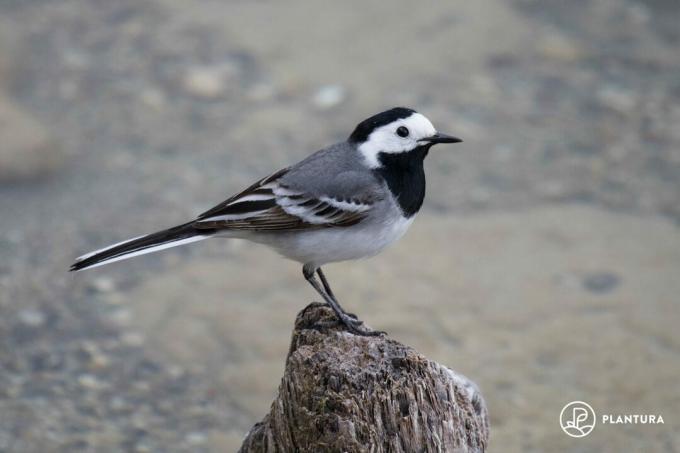
By the way, if you see a bird that looks something like the wagtail but has a yellow belly, it is not a color defect, but one of two closely related but rarer types: the Yellow wagtail (Motacilla flava) or the gray wagtail (Motacilla cinerea).

What is the difference between female and male wagtails?
Females and males do not differ very much in the wagtail. The only distinguishing feature is the parting, which in the males is deep black up to the neck and contrasts with the gray back. In the females, on the other hand, the neck is colored dark gray and thus forms a somewhat softer transition to the light back. However, this distinguishing feature is lost in the plain dress.
What does wagtail singing sound like?
The song of the wagtail consists of a light, two-syllable "Dschi-witt", which is often performed from a high vantage point. So if you hear a wagtail singing, it's worth looking for it on the roof of the next building, for example. Similar two-syllable calls are made in flight.
Here you can listen to the wagtail singing:

How do you recognize a young wagtail?
Young wagtails already have the same upright, stilt-like shape as their parents. The long tail is also well developed. However, their plumage lacks the black color of the adult animals. The chest is only adorned with a dark triangle surrounded by dirty white feathers. In the adult animals, even in their simple dress, the black patch on the chest clearly stands out from the snow-white background.
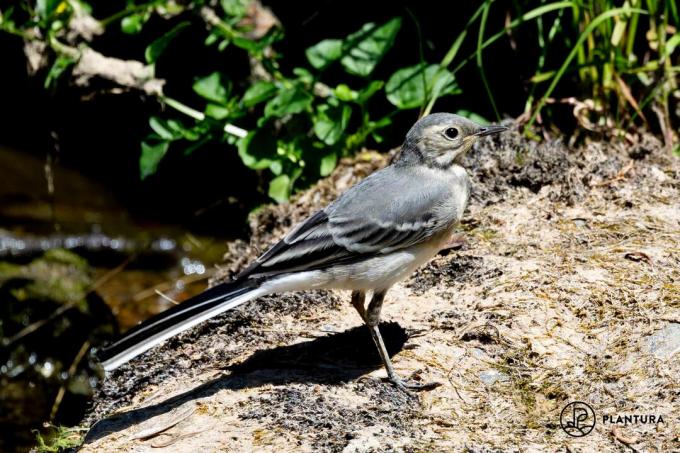
What do wagtail eggs look like?
Wagtails lay brown-spotted eggs about 2 x 1.5 centimeters. Five or six eggs are placed in a cup-like nest made of twigs, moss and other plant fibers, the hollow of which is padded with animal hair and feathers.
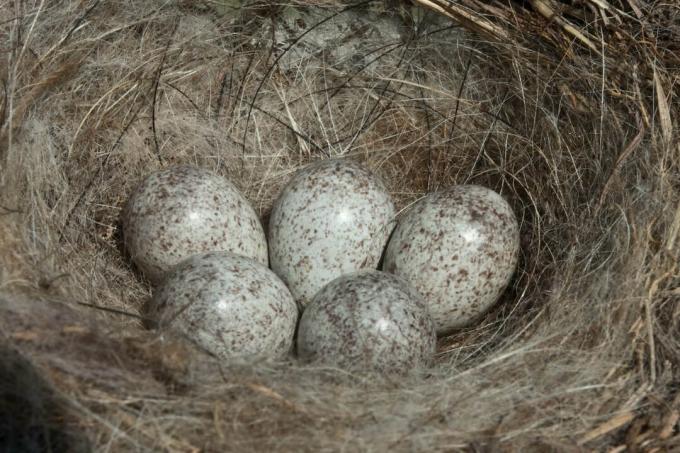
Which habitat do the wagtails prefer?
Wagtails love open spaces where they can hunt for insects on the ground. Sunny places where there is a lot of food are particularly popular. In addition, wagtails are often found near bodies of water. Nest-friendly structures such as embankments, smaller groups of trees or buildings are also important for the habitat.
Where does the wagtail build their nest?
The wagtail builds their nest on steep banks, in tree hollows and building niches or in open fields. In general, the nesting structures are more likely to be found near the ground. The nests themselves are mainly built by the female, which takes about a week - the male only participates sporadically. Good nests are often reused over several years. Wagtails often breed close to humans and have already made many artificial structures their own.
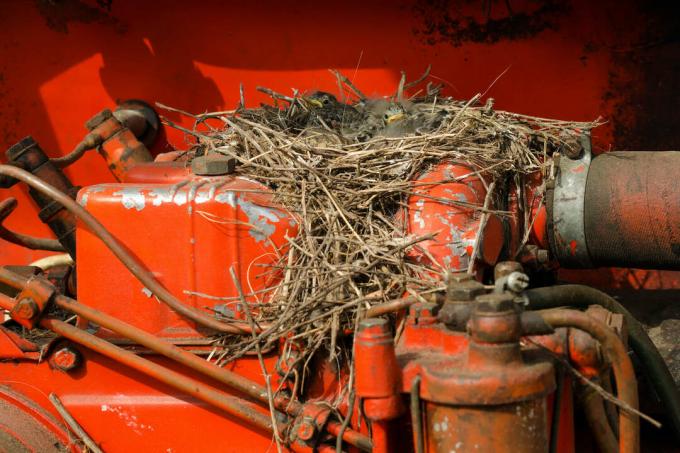
When is the wagtail breeding season?
The wagtail breeding season extends from April to June. During this time, a breeding pair can raise up to three broods under ideal conditions. The eggs are incubated for 11 to 17 days, with the female doing most of the work here too. After hatching, both parents feed the young birds for two weeks. Then they fly out and are only supported by their parents for a few days before they are left to fend for themselves.
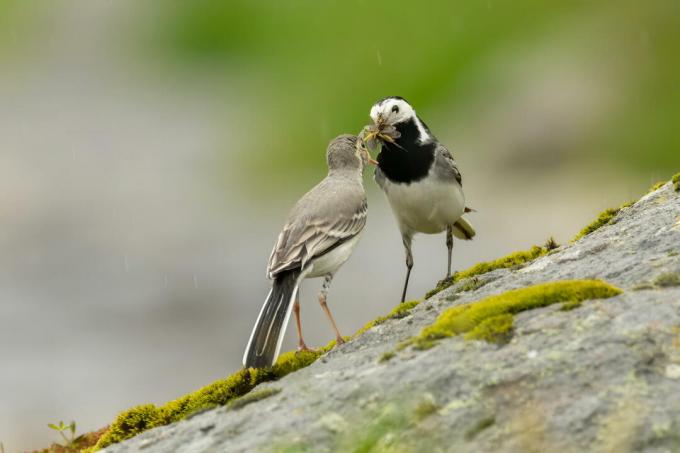
Where does the wagtail spend the winter?
Most wagtails spend the winter in the warm areas of the Mediterranean. Sometimes the birds also migrate far into Africa or even stay in their breeding areas. The birds can therefore seldom be observed with us even in the cold winter months. For this purpose, adult males often set themselves up foraging areas that they defend well. Young birds and female wagtails, on the other hand, travel in smaller groups and look for food together in the barren landscape.
Support the white wagtail in the garden: This is how it works
Open, moist meadows are becoming increasingly rare in our increasingly intensively used landscape. This is why wagtails take refuge in settlements, parks and gardens. You can find out here how you can greet the birds in a friendly manner in your own garden.
What do wagtails eat?
Wagtails mainly feed on insects and spiders. Berries or seeds are rarely accepted. The hunters like to stalk through areas with short grass and catch small flying insects or other crawling animals. Anyone who can call their own a garden with a lot of open space offers the wagtail ideal hunting grounds. However, do not use chemical sprays in your garden, as these reduce the supply of insects and can even poison birds through the food chain.

Which nest boxes are suitable for wagtails?
If you want to offer the wagtail a nest box in your garden, you should use a so-called half-cave box. Compared to classic tit boxes, these are not equipped with a small entrance hole, but offer a larger entrance opening.
Like you in general Build your own nest box You can find out where to hang it up and how to clean it properly in our special article.
How can you additionally support the wagtail?
White wagtails depend on a rich supply of insects. A insect-friendly garden can therefore make a huge difference. But wild and bustling areas are also extremely valuable in our landscape. Therefore, advocate sustainable and extensive use of our landscape. Purchasing organically grown food, for example, can contribute to this. Because by buying organic products you are helping to cultivate the landscape in a more ecological and therefore more bird-friendly way.
In the eyes of the wagtails, your garden reaps another plus point by offering one small water point such as an artificial stream, a small pond or just one Bird bath.
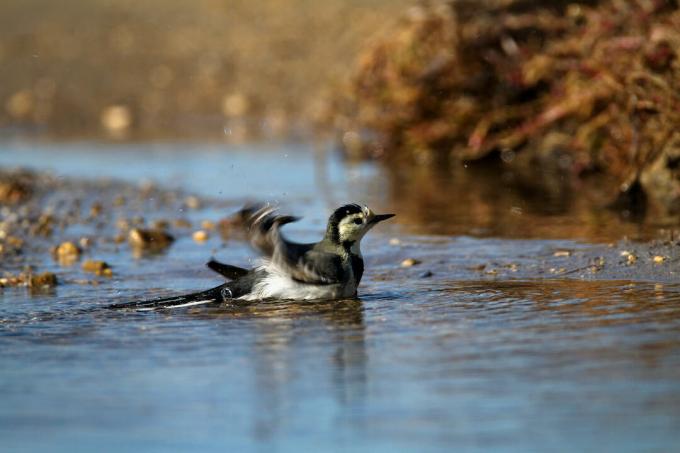
Other garden birds are also happy to be able to swim on hot days. Take a look at our portraits House martin, Goldhammer & Co. over.
